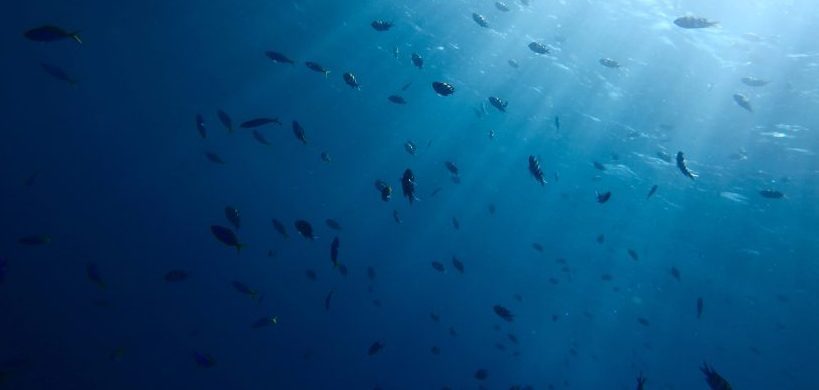Some of the most horrific disasters can happen in the name of good intentions. Storing and collecting natural resources sounds harmless enough, but what happens when things go wrong?
Offshore oil rigs are capable of drilling wells and extracting natural gas and oil to be shipped all over the world. But, when an oil rig explodes, it can be quite deadly and cause massive destruction to the surrounding land and ocean. How can we help prevent disasters like this from happening? One scientist is creating new safety mechanisms to better protect workers and the environment.
Barbara Kutchko is a Senior Research Scientist at one of the national labs with the Department of Energy (DOE), the National Energy Technology Lab (NETL) in Pittsburgh, Pennsylvania. Her groundbreaking research has aided in the creation of new industry standards regarding the foamed cement used to stabilize oil wells. Because of Kutchko’s efforts in limiting oil rig blowouts and keeping our environment safe, she is a finalist for the 2018 Service to America Medals or the SAMMIES.
The SAMMIES are an esteemed awards program sponsored by the Partnership for Public Service that recognizes remarkable work done by career federal employees. Last week, Emily Jarvis spoke with Kutchko about the amazing work that she was able to accomplish in the wake of the Deepwater Horizon oil rig explosion.
From a very young age, Kutchko expressed interest in science and had a distinct passion for studying and learning about the world around her. Kutchko’s first experience in studying nature came in the form of a whitewater rafting trip with her geology class. The experience propelled her towards a greater interest in geology and acted as her entrance into studying the Earth’s surfaces. After graduating from college, Kutchko began researching concrete.
“Everything that I had learned in my geology classes, in my chemistry classes, in my engineering classes… it all went together, it all sort of wrapped up into concrete.” Kutchko added, “It was a sort of a natural turn when I came here to focus on cement. And I get to bring in my engineering background and I get to bring in my geology background because we’re studying deep in the earth’s surface.”
As a research scientist, Kutchko’s primary focus is ensuring that the production of oil and gas are both safe and economically effective. Her research largely consists of the cement that lies within the wellbores of an oil rig. “Cement is one of the most, if not the most, important component of a well. It holds the well in place; it prevents fluids and gasses from working their way up. The cement keeps everybody safe,” said Kutchko.
At NETL, Kutchko is able to simulate subsurface conditions to carry out her research on safety measures. “I can recreate a downhole deep in the Earth in the lab and determine whether or not it’s effective to go out,” she said.
Kutchko’s research plays a big part in the stability of wellbores. She noted that when workers are drilling into the Earth’s surface, it is important to provide them with a safety net that significantly decreases the amount of pressure that is produced. The workers use cement to fill in the gaps created between newly drilled holes and the steel casing that supports them.
“The contents, fluids, and gasses in the earth are under high pressures and high temperatures. As you go deeper and deeper, those temperatures and pressures become higher. So, as you’re drilling, you need to put something in there to contain that and keep everything in place,” said Kutchko.
After the Deep Water Horizon oil spill in 2010, investigators found that the cement used in that specific event was not strong enough to keep the fluids in place in the steel casing and played a major role in the explosion.
“That was a real eye-opener. People had probably never heard of wellbore cement or didn’t know what it did. All of a sudden, it was placed front and center, and industry was very motivated to make sure something like this never happened again,” said Kutchko.
Kutchko and her team of researchers at the NETL were able to use CT imagining to find out what elements needed to be changed in order to make the cement stronger and safer. The CT scans produced 3-dimensional photos that allowed them to see if the foam bubbles were evenly distributed throughout the cement. “
You don’t want the bubbles to be connected, because if they connect then you’ve formed pathways where fluids can migrate or planes of weakness. Because of the CT scan, we were able to also take physical measures of how strong the cement was,” said Kutchko.
She noted that one of the most important things about her work with the DOE and NETL is the freedom they give her as a scientist. “We can do things that either industry can’t or won’t. And by working with industry, we can do even more. When I do this research, it’s not to make anybody or any single company money, it’s for the good of all.”
Get to know the other SAMMIE finalists before the ceremony. We think all of the finalists are awesome, but if you have a favorite be sure to vote for them in the People’s Choice Award!





Leave a Reply
You must be logged in to post a comment.